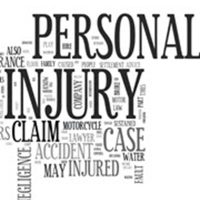What is Comparative Fault in Personal Injury Claims?

Accidents happen all the time in Knoxville and when they do, victims can often file a personal injury claim against the negligent, or careless, party who caused their injuries. There are many challenges that come with filing a personal injury claim, though. One of these is that the defendant, or negligent party, will often use the defense of comparative fault to shield themselves from paying full damages. Below, our Knoxville personal injury attorney outlines the comparative fault law in Tennessee, and how it may affect your case.
What is the Comparative Fault Law?
Comparative fault law replaced the contributory negligence law in Tennessee in 1992. Under the contributory negligence law, accident victims could not claim any compensation if they were even one percent at fault for their injuries. For example, if two motorists were involved in a crash and one was speeding while the other was distracted, both may be deemed liable for the crash. Under the old law, neither party could file a claim for compensation. Although some states, such as California, still follow contributory negligence rules, Tennessee does not.
Today, accident victims can still claim compensation if they contributed to an accident. According to the comparative fault law, victims must be less than 50 percent at fault to claim damages, which is why this law is also sometimes called the 49 percent rule. Using the same example as above, if the speeding driver was found 80 percent to blame and the distracted driver was found 20 percent at fault, the driver who was distracted could still claim damages.
How Does Comparative Fault Law Impact Personal Injury Claims?
While accident victims can claim compensation if they were less than 50 percent at fault for an accident, they will not receive the full amount of damages they would have if they were completely blameless. Under the comparative fault law, when an injured individual was less than 50 percent at fault for an accident, any damages they are awarded are reduced by their same percentage of fault.
Staying with the above example, the driver who was distracted would have their damages reduced by 20 percent. So, if they were initially awarded $100,000, they would receive $80,000 in total.
Negligent parties, and the insurance companies who cover them, often use the comparative fault law to reduce the total amount of damages accident victims receive. Insurance companies, in particular, have many different tactics they use to try and prove the victim was to blame, even when they were hurt through no fault of their own. This is just one reason why it is so important to seek legal representation after any accident.
Our Personal Injury Attorney in Knoxville Can Prove Your Case
If you have been hurt in an accident, you need a strong legal team behind you that can prove your case and help you obtain the full settlement you deserve. At Reynolds, Atkins, Brezina & Stewart, PLLC, our Knoxville personal injury attorney can present evidence that gives you the best chance of obtaining full compensation, and defend against arguments that will hurt your case. Call us now at 865-500-3121 or contact us online to schedule a free review of your case.
Source:
lawserver.com/law/state/tennessee/tn-code/tennessee_code_title_29_chapter_11#google_vignette

